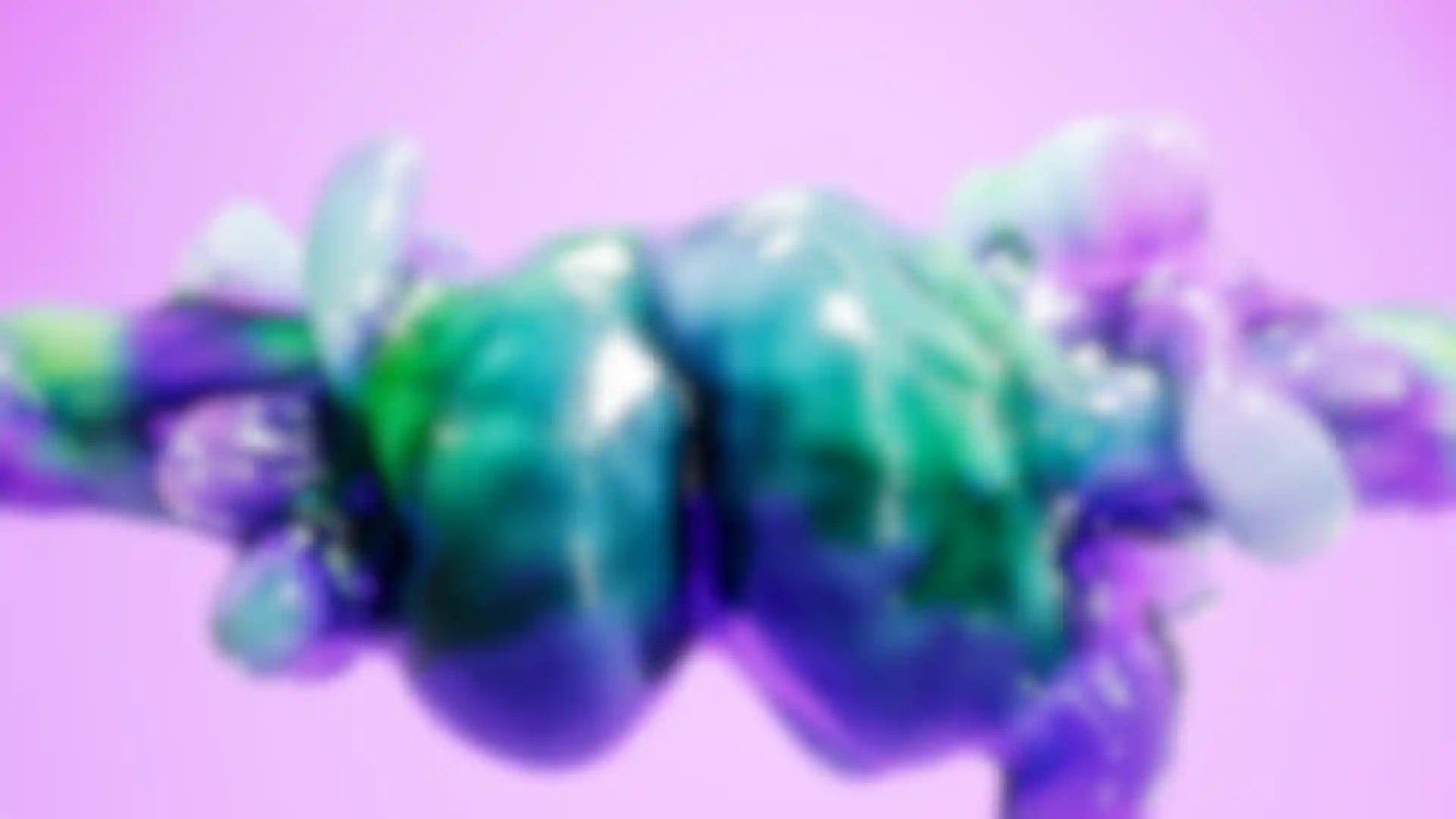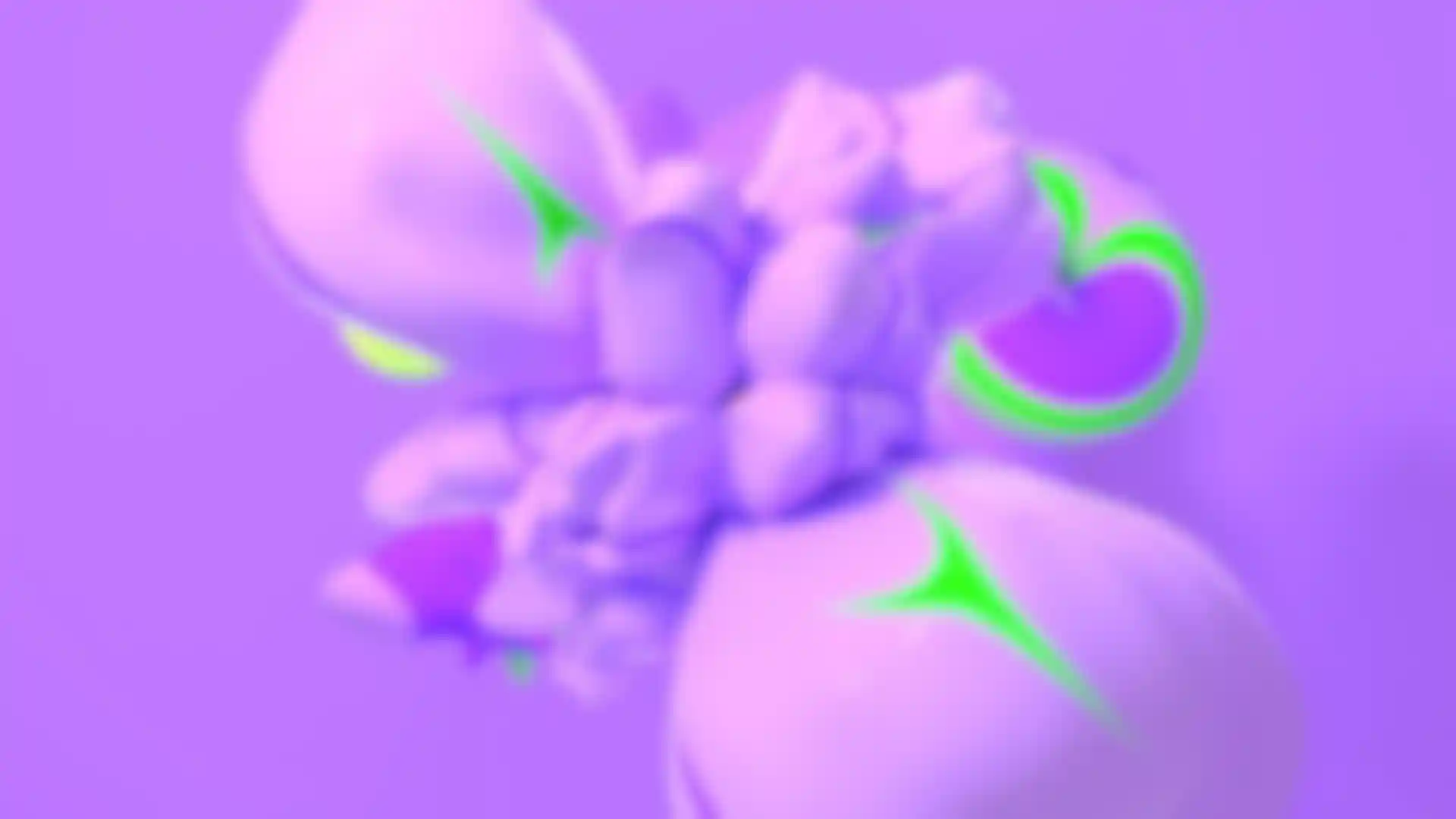
3D Experiments and Happy Accidents Directors P.J. Richardson and Alex Liou on using C4D, Houdini and Redshift for FITC Toronto’s 2021 titles.
Motion design artists P. J. Richardson and Alex Liou created the opening titles for this year’s FITC Toronto 2021 online conference in the spirit of learning and experimentation. And because FITC’s events are aimed at students, as well as professionals, the duo decided that the project was a great opportunity to embark on their own journey of discovery since they already swap tips about new ways to use Cinema 4D, Houdini and Redshift.
“Alex is always taking classes and I’m always doing Redshift Patreon tutorials,” Richardson explains. “So we thought, ‘Why don’t we treat it like we’re students learning new techniques, in the same way that the audience attending FITC is also trying to learn something new?’”
Richardson and Liou were already collaborating on projects at Laundry, the San Francisco and L.A.-based studio Richardson co-founded in 2006. But the FITC project helped develop their chops in fresh new ways. While 2D animation and CG product renders are the bread and butter of Laundry’s client work, Richardson and Liou were eager to experiment with techniques that used Houdini simulations in Redshift to create unique effects.

Liou cites the shot above as an example, which was inspired by an Entagma tutorial on making FLIP simulations in Houdini follow curves (or splines) of shapes. He started with a six-pointed star, then used Houdini channel operators (CHOPs) to add small, random rotation offsets that made the eventual fluid animation feel more organic.
Pipeline and Workflow
Though After Effects was a part of their pipeline, both artists say they’ve been using it less and less as they’ve mastered more techniques in Redshift. “I will do chromatic operations, grain and things like that in After Effects, but I can use more tools in less time in the viewport,” Liou says. “With most of these shots, my finishing was straight out of Redshift.” Richardson’s experience was the same: “I used Redshift Post FX a ton for things like subtle glows and color-correction,” he says. “I don’t think I did any post in After Effects.
During the COVID-19 lockdown, Richardson and Liou collaborated by using Google Drive and Dropbox to share media, chatting about the results over Discord. All of that went smoothly, but some things did change due to pandemic constraints. Rather than going with the original plan to extend the color scheme to the typography Richardson and Liou opted for clean white type because it would look better on Zoom.

Fortunately, they’d given themselves plenty of leeway to make adjustments. “One of the smartest things we did was give ourselves a lot of time,” Richardson recalls. “And we were rigorous about setting mini goals and check-ins. Two minutes is a long time, especially for two people, so I think it saved us to be proactive and forward thinking.”
Experiments and Evolution
Key frames for the project, including the poster below, were designed in Cinema 4D and rendered with Redshift, but Richardson and Liou knew they would get wilder, more exciting results through aggressive experimentation. “We said, ‘OK, we’ve got to go full mad-scientist mode and find the happy accidents,” Richardson explains.

“Since it was abstract, we knew it was going to get more visually intense as the sequence progressed. From there, we could plug different experiments into different places based on how crazy they were. That filled in a lot of the gaps in the structure of our storyboards.”
Richardson and Liou experimented with Cinema 4D deformers and inflations, as well as Mograph attractors played in reverse, to generate these bulging shapes. “It was a test, but it was an important test because it was messy and chaotic,” Richardson says. It was immediately clear, for example, that texture resolutions would have to be increased so they wouldn’t become grainy as the shapes deformed and expanded.

One of the simpler visuals involves pill-like shapes rendered with different surfaces that reflect light in different ways. It highlights the purple-and-green color scheme that recurs throughout the work. The tranquil shapes are meant to set up more random, explosive shapes that appear later, Richardson says, but they also suggest a graphic representation of a sound waveform. “We wanted to start with this simpler moment and then build repetition and chaos on top of it,” he says.
Liou found that a mixture of subsurface scattering and refraction gave the geometry a complex, realistic quality, suggesting a milky, almost tactile substance. Sharp specular highlights and a kind of purple glow burnish the bottom edge as though light were being reflected up from a cyclorama. “You can generate great textures so quickly with Redshift,” Liou says. “I can have lights bouncing everywhere and I know it’s still going to render just fine.”

Liou brought more of the same techniques to bear on the frame seen above. The colors aren’t being mixed on a shader level. Instead, they’re driven by a Houdini smoke simulation using Axiom, a free GPU-based solver developed by Matt Puchala that Liou says runs much faster than the CPU-based pyro solver built into Houdini. Attributes in the smoke simulation, such as density and velocity, control the color data.
The iridescent texture on the liquid sims was created using Redshift OSL shaders, with rest attributes applied to keep the UV-mapped textures from slipping. “I wouldn’t attempt this if it weren’t for great tools like Redshift and the ease of how it speaks with Houdini,” Liou says. “I like how it lets me map really intricate-looking textures onto a liquid that should be a lot harder to map textures onto.”

A Learning Experience
Both Richardson and Liou stress the debt they owe to Cinema 4D and Houdini artists whose tutorials inspired them to employ new techniques. While Richardson says you can find direct “hints” of these training projects in the finished FITC project, the goal was to use them as inspiration rather than blueprints. Among the artists whose tutorials informed the project were Mikhail Sedov, Vincent Schwenk, 3DBONFIRE and Entagma.
In the end, they agree that the project was a success, not just as a dynamic kick-off to FITC 2021, but as a learning opportunity. “It was a way to stretch and push ourselves creatively while being humble and learning new techniques,” Richardson says. “We thought, ‘Who knows what this is going to be? We’ll know it when we see it.’ That was the plan from the start, and that’s how it ended. We both got more comfortable with the creative unknown.”